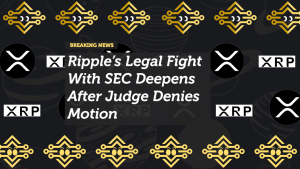
Beyond Scalability: How NEAR Protocol is Pioneering Carbon-Neutral Blockchain Solutions
As blockchain technology continues to evolve, issues like scalability and energy consumption are at the forefront of discussions. While many blockchains have made strides in scaling transaction throughput, the environmental impact of these networks has become a growing concern. The energy-intensive nature of certain consensus mechanisms, especially Proof-of-Work (PoW), has led to increasing scrutiny from regulators, investors, and environmentally conscious users. Amid these concerns, NEAR Protocol is emerging as a leader in not only addressing scalability but also pioneering carbon-neutral blockchain solutions. But how is NEAR balancing high performance with environmental sustainability, and why is it setting the standard for the future of eco-friendly decentralized networks? Let’s explore.
NEAR Protocol: Scalability Meets Sustainability
The Scalability Challenge
NEAR Protocol, a layer-1 blockchain, was designed from the ground up to solve the scalability issues that plague many blockchain networks, such as Ethereum. Using advanced technologies like sharding and a Proof-of-Stake (PoS) consensus mechanism, NEAR can process thousands of transactions per second (TPS) with minimal transaction fees.
But NEAR’s focus extends beyond just scaling to meet user demand. The platform is setting a new standard by also addressing the environmental impact of blockchain networks. With its carbon-neutral footprint, NEAR is proving that blockchain technology can be both scalable and sustainable.
What Makes NEAR Carbon-Neutral?
Proof-of-Stake Consensus: Energy-Efficient by Design
One of the key reasons NEAR is more eco-friendly than traditional blockchains like Bitcoin is its use of Proof-of-Stake (PoS). Unlike Proof-of-Work, which requires vast amounts of computational power and electricity to validate transactions, PoS consumes significantly less energy. Validators in a PoS system are chosen to create new blocks based on the number of tokens they hold and are willing to stake, reducing the need for energy-intensive mining hardware.
In fact, PoS-based networks like NEAR Protocol consume about 99% less energy compared to PoW systems like Bitcoin or Ethereum 1.0, making them inherently more energy-efficient.
Partnering for Sustainability
Carbon Offset Partnerships
While NEAR’s PoS consensus already minimizes energy consumption, the network takes it a step further by actively partnering with sustainability-focused organizations to achieve carbon neutrality. NEAR collaborates with South Pole, a leading global provider of climate action services, to offset its carbon footprint. Through this partnership, NEAR supports projects that actively remove or prevent carbon dioxide from entering the atmosphere, ensuring that the network operates without contributing to global carbon emissions.
These partnerships help NEAR maintain a net-zero carbon footprint, a significant step toward ensuring that blockchain technology doesn’t come at the cost of environmental harm.
Sustainable Development Initiatives
Incentivizing Eco-Friendly Projects
NEAR Protocol is also encouraging developers to build eco-friendly dApps and projects. Through its grant programs and incentives, NEAR aims to foster a growing ecosystem of sustainable blockchain projects. Whether it’s applications for decentralized finance (DeFi), non-fungible tokens (NFTs), or gaming, NEAR’s developer ecosystem is increasingly focused on sustainability.
By providing resources and funding for green projects, NEAR is positioning itself as not only a scalable platform but also as a network that supports the development of environmentally conscious technologies.
Real-World Use Cases: NEAR’s Impact on Sustainability
1. Green NFTs
The environmental impact of NFTs has been a hot topic, particularly due to the energy consumption of Ethereum, where most NFTs are minted and traded. NEAR’s eco-friendly blockchain offers a more sustainable alternative for NFT creators and marketplaces. Platforms like Mintbase and Paras, which are built on NEAR, allow creators to mint NFTs with minimal environmental impact, offering a solution for artists and collectors who care about sustainability.
By providing a carbon-neutral blockchain for minting and trading NFTs, NEAR is enabling the future of digital art and collectibles without the heavy energy costs associated with other blockchains.
2. DeFi with a Smaller Footprint
Decentralized finance (DeFi) is another sector where NEAR’s carbon-neutral blockchain is making a difference. DeFi applications built on NEAR, such as Ref Finance and Burrow, allow users to lend, borrow, and trade digital assets in an eco-friendly manner. These platforms benefit from NEAR’s scalability and low fees, while also ensuring that their operations do not contribute to the global carbon crisis.
As DeFi grows, the ability to operate on a sustainable blockchain will become increasingly important for eco-conscious investors and users.
The Future of Blockchain: A Sustainable Vision
NEAR’s Role in Shaping the Future of Green Technology
As blockchain technology becomes more embedded in industries ranging from finance to art, the pressure to adopt sustainable practices will only increase. NEAR Protocol is at the forefront of this movement, demonstrating that high performance and environmental responsibility are not mutually exclusive.
With its carbon-neutral footprint, NEAR is setting the standard for other blockchain networks. Its ability to scale without compromising on sustainability gives it a competitive edge in an industry increasingly concerned with its environmental impact.
Expansion of Sustainable Blockchain Solutions
Looking ahead, NEAR aims to continue expanding its sustainability initiatives by supporting even more eco-friendly projects and expanding its network of partners in the climate action space. The protocol’s ongoing development includes more tools, infrastructure, and grants to encourage innovation in the green technology sector.
In a future where blockchain plays an integral role in global financial and social systems, NEAR’s commitment to carbon neutrality could serve as a blueprint for how decentralized technology can evolve without harming the environment.
Conclusion: NEAR’s Commitment to a Carbon-Neutral Blockchain Future
NEAR Protocol is proving that the blockchain industry doesn’t need to choose between scalability and sustainability. With its Proof-of-Stake consensus, carbon offset partnerships, and dedication to fostering eco-friendly projects, NEAR is setting the bar high for environmentally responsible blockchain technology.
As the demand for decentralized applications continues to grow, the need for sustainable blockchain solutions will become even more critical. NEAR Protocol’s leadership in this space showcases how decentralized technologies can scale efficiently while remaining carbon-neutral, offering a glimpse into the future of green blockchain innovation.
















